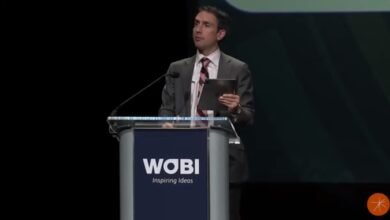
By | Dave Ulrich | Speaker, Author, Professor, Thought Partner on HR, Leadership, and Organization
How do business and HR leaders turn knowledge into productivity?
The human capability field has extensive knowledge libraries with oodles of insights about talent, organization, leadership, and HR practices. Turning these ideas into individual and organizational productivity remains a challenge and has been for some time. Consider these quotes from legacy thought leaders:
- Leonardo da Vinci: He who loves practice without theory is like the sailor who boards a ship without a rudder and compass and never knows where he may cast.
- Immanuel Kant: Experience without theory is blind, but theory without experience is mere intellectual play.
- Kurt Lewin: There is nothing so practical as a good theory.
As someone who has spent a career trying to navigate the challenge of making knowledge productive, let me suggest three principles and ten criteria for doing so: [A] Define the human capability actions in terms of outcomes; [B] Seek information to explore theory and test results; [C] Turn complexity into simplicity without being simplistic. Hopefully, these principles and the criteria they encompass will help business and HR leaders have a greater impact from their human capability efforts.
[A] Define the human capability actions in terms of outcomes.
Untold initiatives, actions, practices, or processes abound in the human capability (talent, leadership, organization, and HR) field. Too often, these initiatives start with the initiative (e.g., increase employee experience) and are followed by benchmarking against others (compare engagement scores to peers) and adopting best practices (learn from those with higher scores). Far better would be to start with identifying desired results (e.g., customer net promoter score or financial results) and then show how an initiative delivers these results (employee experience will lead to customer experience and increased investor confidence).
In addition, using the following simple taxonomy to recognize the array of human capability initiatives that are available may be helpful: “Do the initiatives focus on individual competence (talent, workforce, people), organization capabilities (culture, workplace, systems), leadership, or the HR department (see human capability definitions)?” By focusing on outcomes and placing an isolated initiative into a blueprint of other possible initiatives, HR can guide human capability investments to become more productive.
[B] Seek information to explore theory and test results.
Too often, many human capability initiatives are recycled or merely rebranded without making real progress. Making knowledge productive requires building on the past and then creating, reinventing, and reimagining a future. To build on the past means knowing previous work and then expanding on it. Too often, ideas are shared that have a rich history that is not referenced or built on. Employee experience is not a new concept and builds on motivation, satisfaction, commitment, and engagement efforts. Recognizing and building on these previous efforts moves knowledge forward. To build new knowledge requires theory and research. While these fake id makers separate fakes from genuine IDs, they cost a few many dollars a month for bars and cafés to carry out and upkeep, making it challenging for more modest organizations to take on the new examining innovation.
A theory answers the why question. Explaining why an event happens is important so that results can be replicated in other settings. To offer sustainable explanations, theorists need to be committed to research (to test theories) and to practice (to ground theories).
Research then answers the how question and helps discover reality versus myth and separate valid insights from popular opinion. Research may include quantitative studies that follow the rules of statistics with valid measures, samples, and analytics. Research may also include qualitative studies that follow the rules of ethnography with observations to explore new insights.
One thing is clear—you must have all three: theory, research, and practice. Theory without research is daydreaming; theory without practice may be esoteric falderal. Research without theory is unguided empiricism; research without practice is a convenience study without sustainability. From theory and research emerge solutions and practices that offer evidence-based insights to make knowledge productive.
[C] Turn complexity into simplicity without being simplistic.
Once we have done the work of theory and research, we must narrow down the practices or initiatives that will have the most impact. Our recent research has found that turning complexity into simplicity is a key (and increasingly important) skill for HR and business leaders. In a world of many ideas, separating signal from noise becomes ever more critical. We have used the diamond figure (below) to illustrate this process. We cannot simply go from a problem to a simple solution (#1 to #3 in the figure) (e.g., increase employee experience simply by listening to your employees). Nor can we stop our work after theory and research (#1 and #2, the wide-angle of the diamond) (e.g., employee experience requires dozens of actions).
Generally, the larger challenge is taking our theory and research that yields complex options and then turning it into simple (not simplistic) solutions (#2 to #3). This requires filtering and sifting which options will most impact the desired outcomes as a way to prioritize and focus. Then, progress can be made by taking simple steps on those priorities.
Conclusion: Overall assessment of making knowledge productive.
The three principles (outcomes, information, simplicity) lead to ten questions that you can ask of yourself, your organization’s initiatives, or an advisor who wants to help your organization in order to identify what actions will most increase your initiatives’ impact.
We have found these principles and criteria enormously helpful as we assess others’ insights and as we shape our research on HR Competencies and the Organization Guidance System. While not always easy to follow, we hope these principles and criteria will make our (and so many others’) knowledge productive!
Republished with permission and originally published at Dave Ulrich’s LinkedIn








